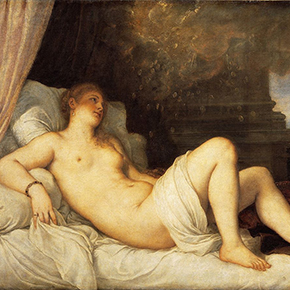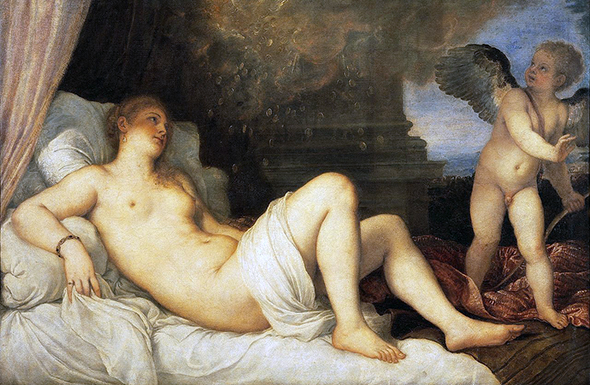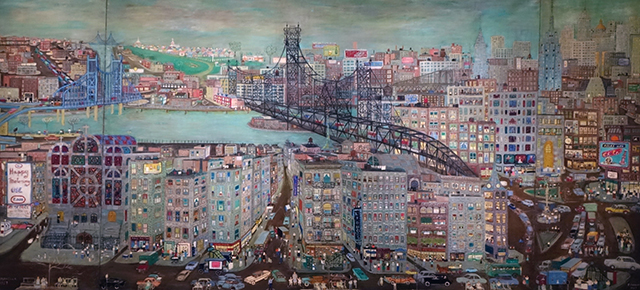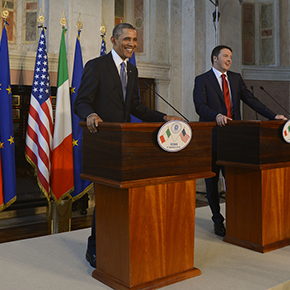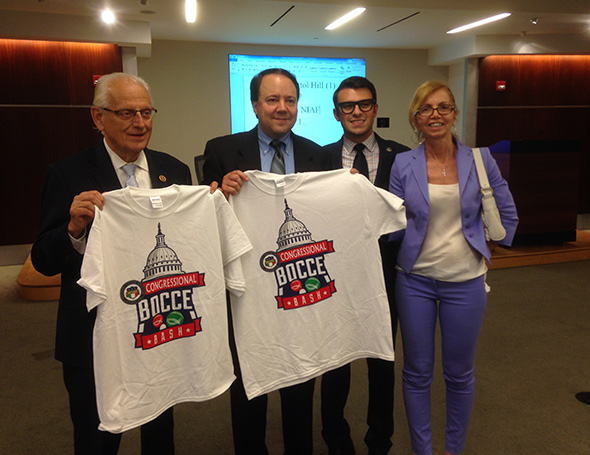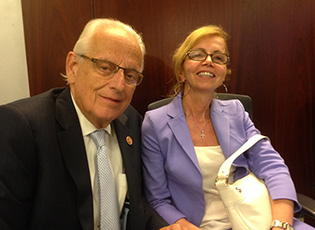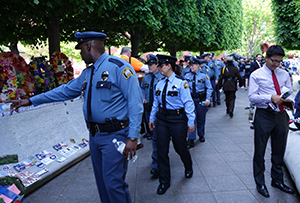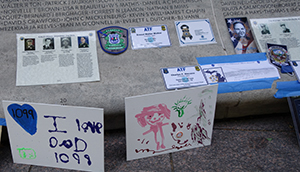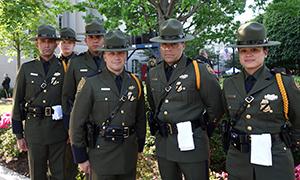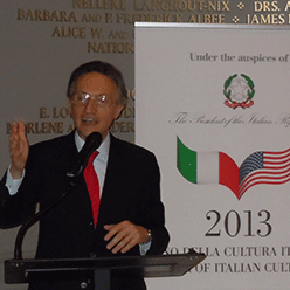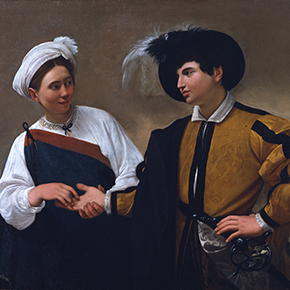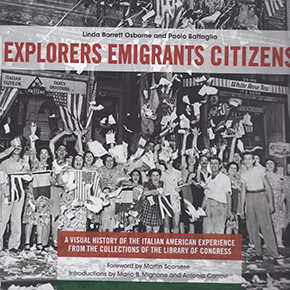At a ceremony held at the Italian Embassy, the Lido Civic Club of Washington, DC, honored Lucia Dalla Montà , Director of the Education Office at the Italian Embassy, who was presented with the Lido Civic Club Appreciation Award in recognition of her contribution in promoting the study of the Italian language in the United States and in reinstating the AP Italian Language and Culture Exam. The award was presented by Lido Civic Club President Francesco Isgro at the Lido Club’s Annual Scholarship Awards Reception.
Italian Embassy Counselor Michele Pala welcomed the guests on behalf of Italian Ambassador Claudio Bisogniero and thanked the Lido Club for not only honoring Dalla Monta but also for its support for the teaching of the Italian language.
Prof. Montà was born in the Province of Padua. After receiving her teaching diploma and several certifications she began to teach elementary school, at a time when changes were unfolding in the Italian school system, such as the “active school” movement and the mainstreaming of children with special needs. She developed a passion for helping students increase self-awareness and self-confidence, and for the special needs of handicapped students.
Resuming her studies at the University of Padua to further her education in Pedagogy, she wrote her final thesis on intercultural educational issues. She graduated with the maximum score and also became certified to teach history and philosophy. She then began a nine-year period as a middle school Principal in the province of Venice. Continuing her special interest in intercultural studies, she became Assistant Professor of General Pedagogy at the University of Padua’s Psychology Faculty, where her work included writing articles, preparing educational materials, researching educational issues in culturally-mixed families and participating in European educational projects.
She was then selected to be Principal of the Italian State School in Madrid, where she implemented many educational innovations over her five-year term. As Principal of this school of about 1,000 students, she gained invaluable multicultural and intercultural experience in dealing with the particular challenges of an Italian school in Spain.
After again winning a National Selection, she was appointed by the Ministry of Foreign Affairs to the Education Office at the Italian Embassy in Washington, D.C., where she has dedicated much energy and passion to the successful reinstatement of the Italian Language and Culture Program as an Advanced Placement (AP) program in the U.S. She designed the “Observatory on the Italian Language in the United States,” as well as strategic plans, sponsorship programs for teachers and students of Italian, a communication plan that includes a brochure, and the website www.usspeaksitalian.org, among numerous other initiatives.
She also coordinates the six Italian Education Offices in the U.S. and is the main reference point for AP-related data collections. She has been active with many teachers’ associations and has worked to create a teachers’ community in the Washington, D.C. area. During her time here, she has established close relationships with local scholastic authorities with whom she developed and concluded significant agreements to increase and improve Italian programs in the Washington area and beyond.
Isgro noted that Prof. Dalla Montà was an action and results-oriented individual, noting, for example that when she first met with Lido Club representatives who asked her how they could be of help, she immediately came up with concrete ideas. One of them was that the Lido Civic Club provide grants to students in the Washington area who take the AP Language Exam. As a result, this year the Lido Club has donated more than $2,200 to the Casa Italiana Ente Gestore to administer the grants.
At the event, the Lido Civic Club presented the winners of the 2014 scholarship awards. The Lido Club awarded $50,000 in scholarships to seven worthy college students of Italian descent. Special congratulations were extended to Martina Costagliola, twice the recipient of the Lido Club’s Dominic F. Antonelli, Jr. Scholarship.


